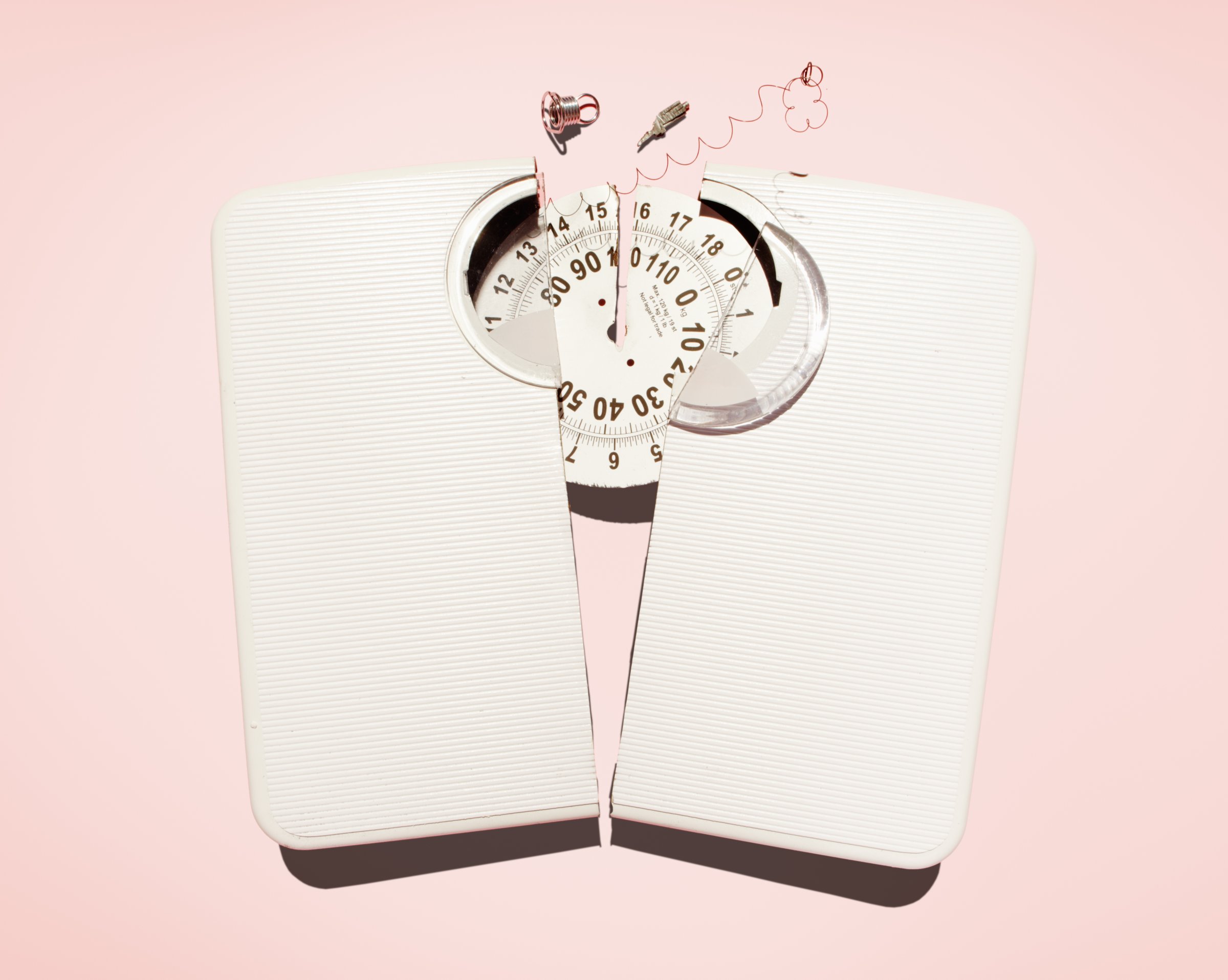
When it comes to determining whether a person is overweight, body mass index (BMI) is the most widely used measure out there. But doctors admit that BMI—a ratio of weight to height—is far from perfect. Now, a new study suggests there may be a better way to estimate the risks of health problems associated with excess weight.
The new research, published today in the Annals of Internal Medicine, found that waist-to-hip ratio was a better predictor of whether people would die over the course of the study, compared to BMI. This isn’t the first study to reach this conclusion, but it’s one of the largest to-date.
Researchers from Loughborough University in the U.K. and the University of Sydney in Australia looked at data from 42,702 men and women living in England and Scotland over a 10-year period. Specifically, they wanted to know if people who carried extra weight around their middles were at increased risks of health problems, compared to those who were technically overweight but carried their extra pounds elsewhere.
Over the course of the study, 5,355 of the participants died. After controlling for factors such as age, gender, smoking status, and physical activity, the researchers found that people who had normal BMIs but who also had “central obesity”—defined as a high waist-to-hip ratio—had a 22% increased risk of death from all causes, compared to people with normal BMIs and healthier waist-to-hip ratios.
Obese people with central obesity were also at higher risk of death compared to normal-weight and normal-waist individuals.
On the other hand, people who were technically overweight or obese based on their BMIs—but who did not have central obesity—were less likely to die than people with normal BMIs but high waist-to-hip ratios.
Surprisingly, overweight people with central obesity did not have an increased risk of death from all causes, compared to people with a normal weight and smaller waistlines. These findings are counterintuitive, say the authors, but they’re similar to those of previous research: A 2015 study found that people with normal BMIs but central obesity had the worst long-term survival rates, even when compared with overweight and obese people who also had central obesity.
Explaining these “paradoxical findings” is challenging, the authors say. One possibility is that overweight and obese people are more likely to also have extra fat stored around their legs and hips, which has been linked to healthier metabolism.
Health.com: 11 Reasons Why You’re Not Losing Belly Fat
The authors also say that limitations in their research—like the fact that BMI and waist measurements were only collected once, rather than several times over the course of the study—may have skewed the results.
But they point out that all participants with central obesity, in every BMI group, were at increased risk of dying specifically from cardiovascular disease. This may imply that the health risks of excess belly fat are specifically related to heart problems, the authors say, more so than other major causes of death.
People with a BMI between 18.5 and 25 are considered normal weight; between 25 and 30 is considered overweight, while 30 and higher is obese. Central obesity is defined as a waist-to-hip ratio of 0.85 or higher for women and 0.9 or higher for men. (Here’s how you can calculate both.)
Health.com: 15 Best Foods for a Flat Belly
Lead author Emmanuel Stamatakis, PhD, associate professor of public health at the University of Sydney, says that while BMI has its flaws, it does provide some useful information—especially for tracking general trends in large groups of people over time.
“Instead of ditching BMI and replacing it with waist-to-hip ratio, which is relatively easy to measure and is consistently associated with cardiovascular health and mortality risk, we should be thinking about adding waist and hip measurements into routine medical examinations and in health studies,” Stamatakis told Health via email.
But Stamatakis says that, on an individual basis, waist measurement might be more important for overall health. “If I had to choose between making sure my BMI or my waist-to-hip ratio are OK, I would go for the latter,” he says.
BMI can be affected by many things, he says, including the amount of lean muscle mass a person has. (That’s why super-fit people, especially men, can register as overweight based on BMI alone.)
A high waist-to-hip ratio, on the other hand, most likely means high amounts of abdominal fat—which has been definitively linked to serious health risks.
“People with larger waistlines may want to start thinking and, if needed, seek help to alter their lifestyle to reduce that belly fat,” says Stamatakis. “Increasing physical activity, improving diet, and cutting down on alcohol consumption can work miracles if sustained in the long term, and all have a myriad other co-benefits in terms of health and wellbeing.”
This article originally appeared on Health.com
More Must-Reads From TIME
- The 100 Most Influential People of 2024
- The Revolution of Yulia Navalnaya
- 6 Compliments That Land Every Time
- Stop Looking for Your Forever Home
- If You're Dating Right Now , You're Brave: Column
- The AI That Could Heal a Divided Internet
- Fallout Is a Brilliant Model for the Future of Video Game Adaptations
- Want Weekly Recs on What to Watch, Read, and More? Sign Up for Worth Your Time
Contact us at letters@time.com